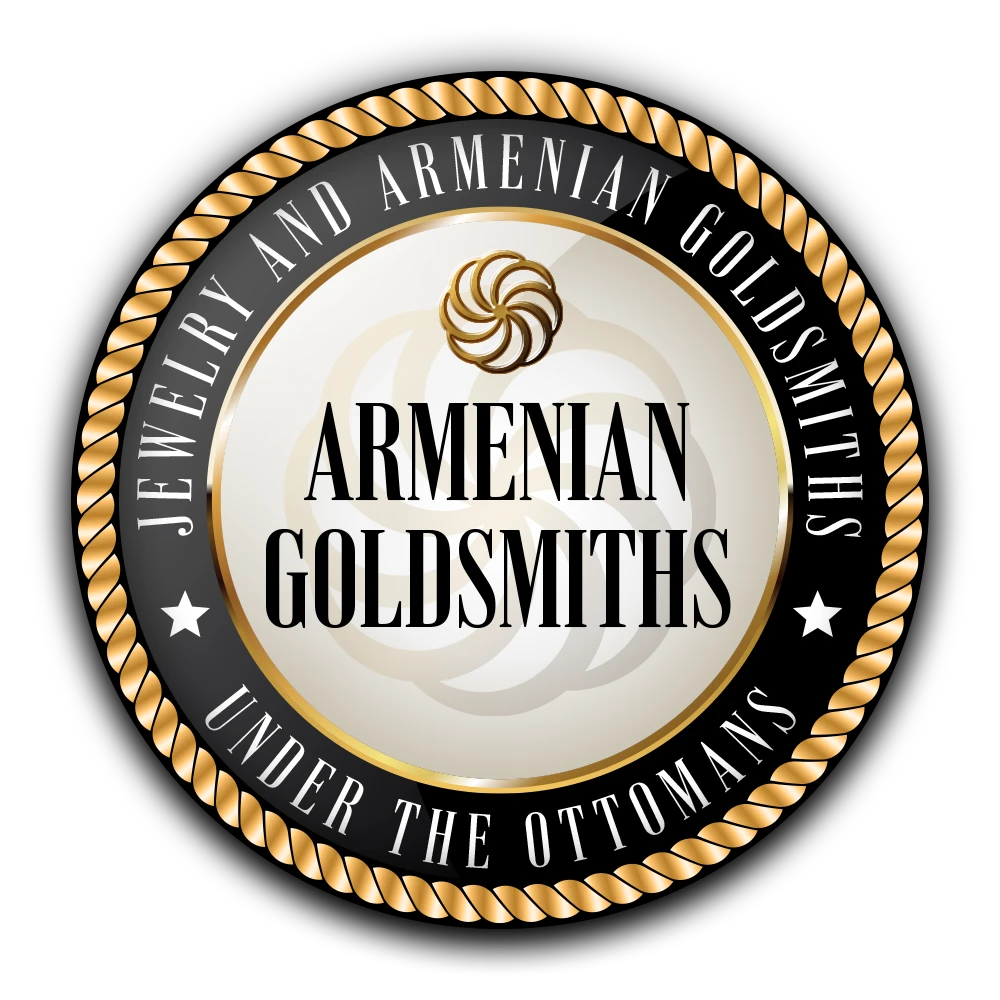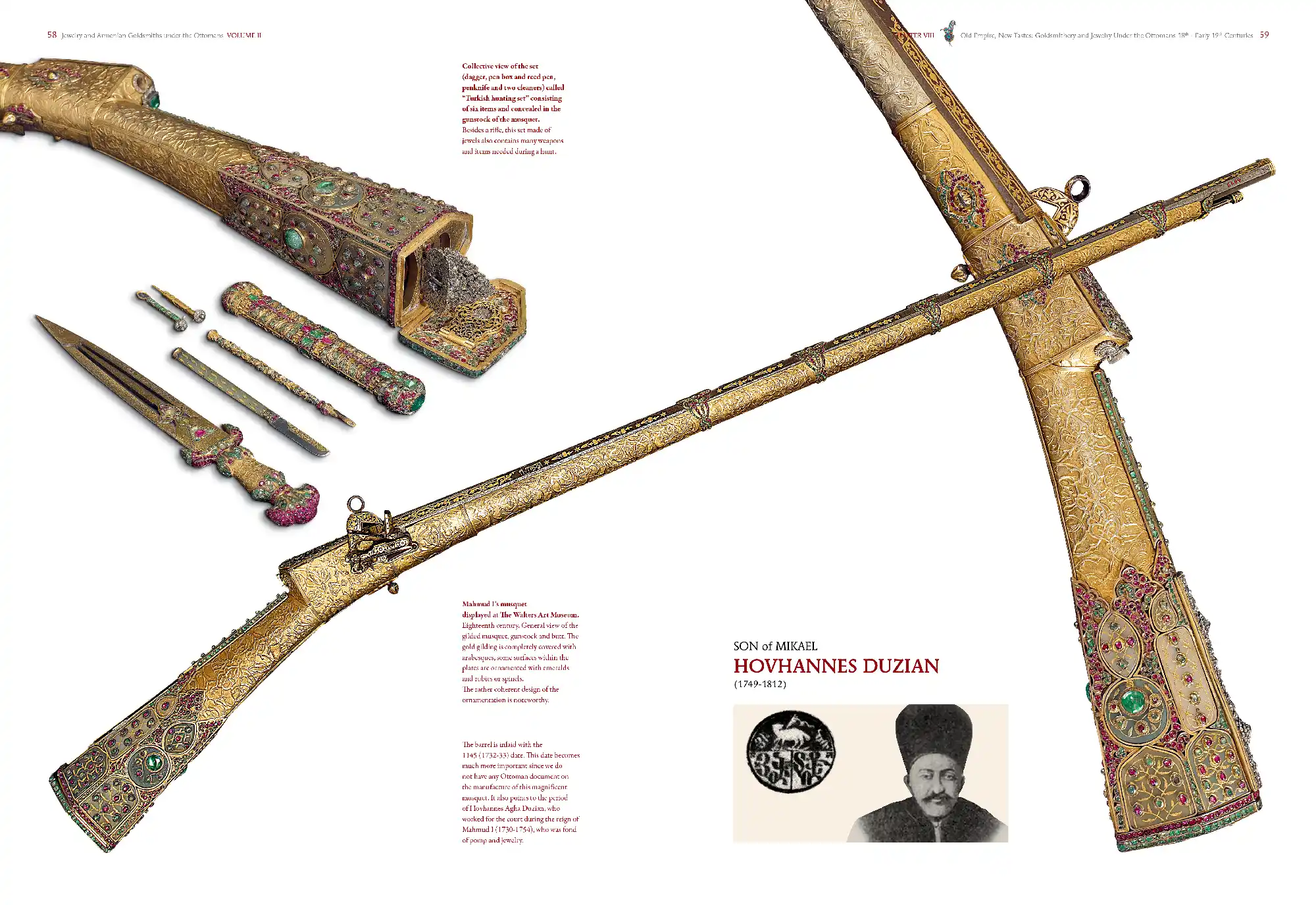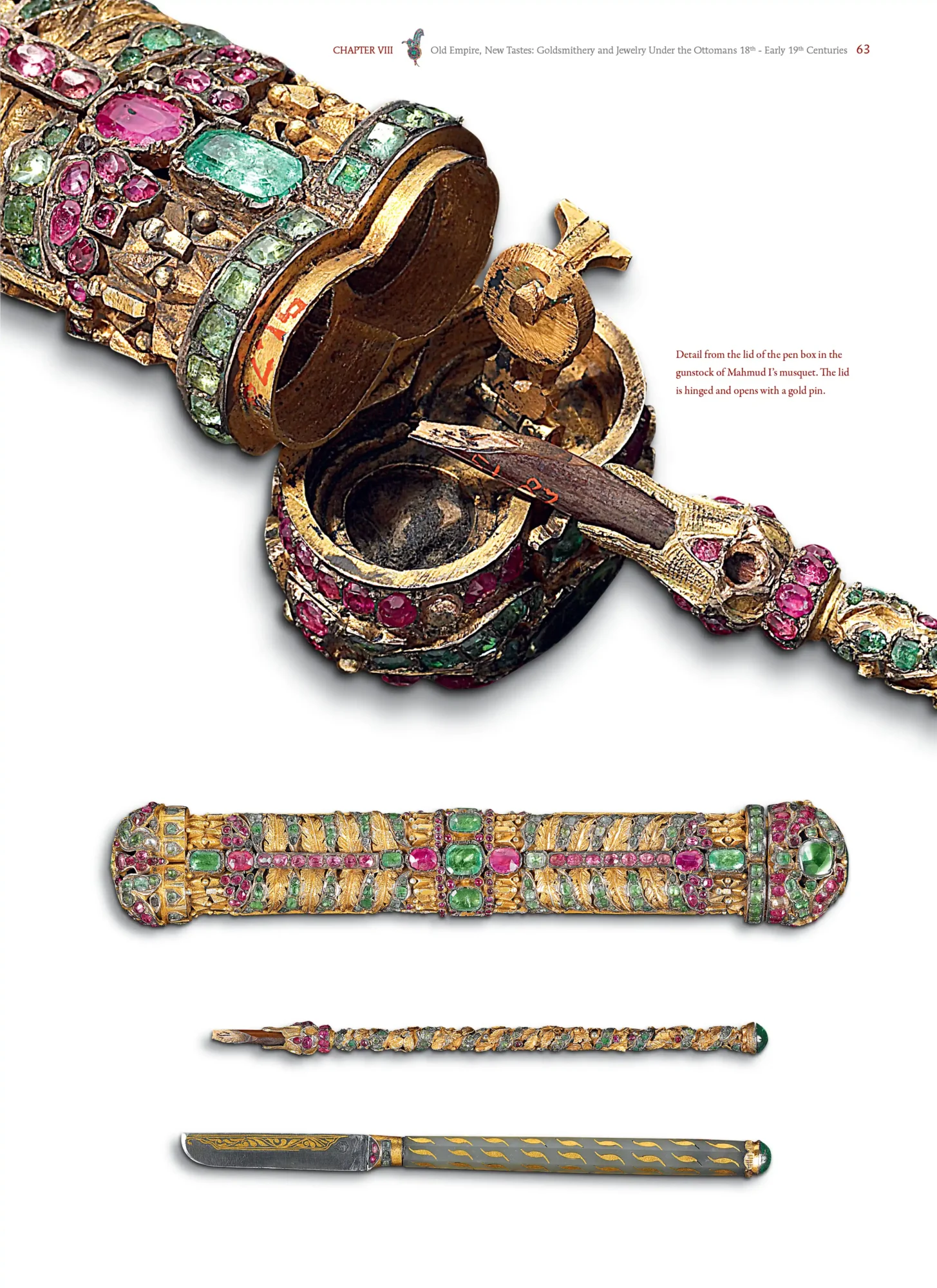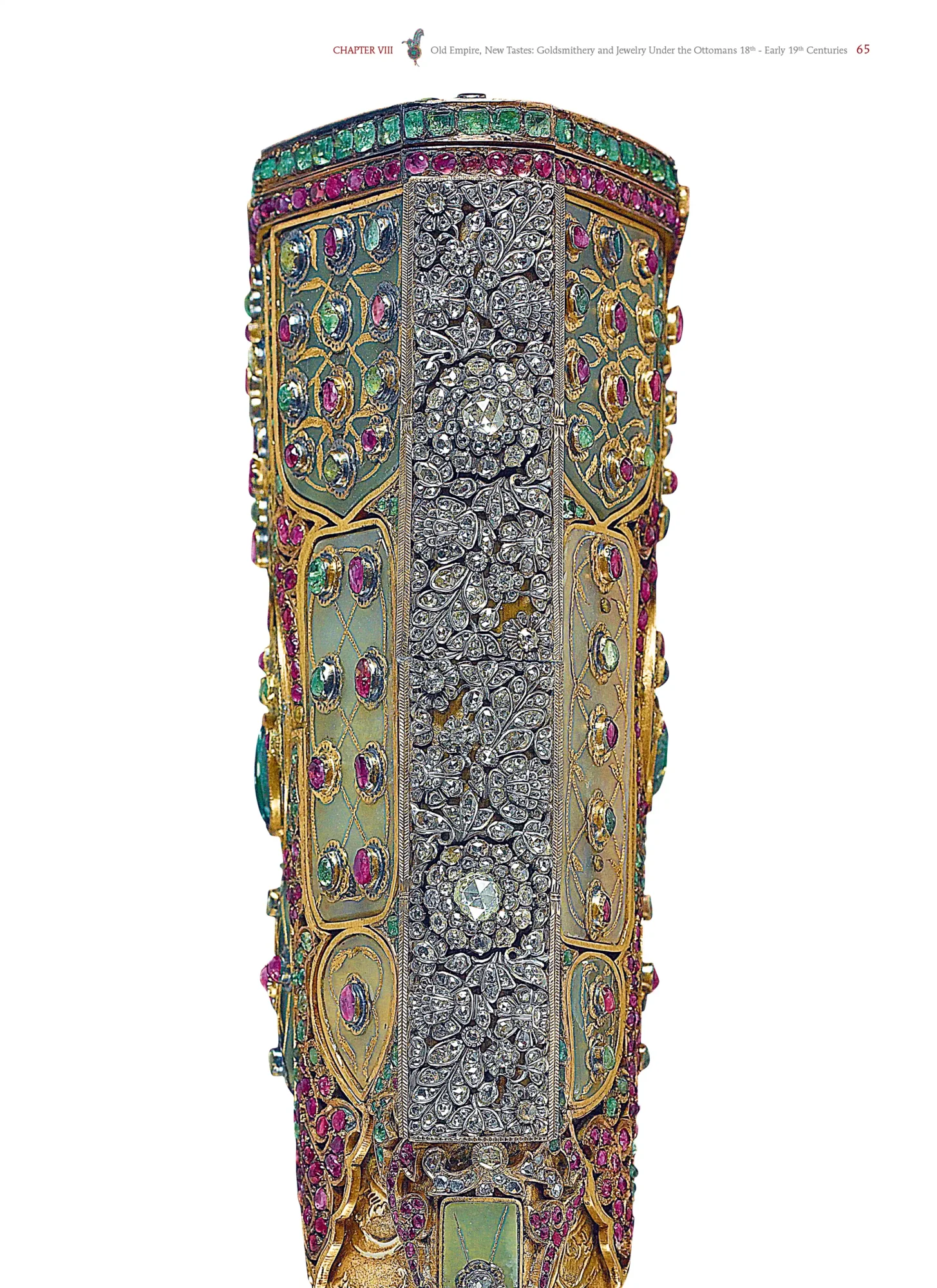THE MASTERPIECE OF HOVHANNES AGHA DUZIAN
Mahmud I’s musquet displayed at The Walters Art Museum.
Eighteenth century. General view of the musquet, gunstock and butt coated with gilding. The gold gilding is completely covered with arabesques, some surfaces within the plates are ornamented with emeralds and rubies or with spinels. The rather consistent design of the ornaments is noteworthy.
The barrel is inlaid with the 1145 (1732-33) date. This date becomes much more important, since we do not possess any Ottoman document on the manufacture of this magnificent musquet. It also points at the period of activity of Hovhannes Agha Duzian, who during the reign of Mahmud I (1730-1754), fond of pomp and jewelry, worked for the court.
Collective sight of the set (dagger, pen box and reed pen, pen sharpening knife and two cleaners) called “Turkish hunting set” consisting of six items and concealed in the gunstock of the musquet.
Besides a rifle, this set made of jewels also contains many weapons and items necessary during a hunt.
Among the items from the “Turkish hunting set” placed in the two chambers within the gunstock of Mahmud I’s musquet, “a pen box,” “reed pen” inv. no. 51.87 and “pen sharpening knife” used to sharpen the pen inv. no. 57.620.
While pen boxes are familiar items for Ottomans, this particular one differs with its ornaments. It is adorned with gold leaves and emeralds and rubies or spinels in stripes, all on a golden base. The reed pen is similarly covered with gold sheets and adorned with emeralds in spiral form, to the extent permitted by the very thin base. The pen sharpening knife is characterized by floral patterns inlaid on the blade and fine golden inlayings on its grip. As with the reed pen, also the pen sharpening knife has a large emerald placed in a golden housing at the very rear.
Detail from the butt end of the musquet preserved in The Walters Art Gallery (top view). While part of the butt end is coated with gilding, the rearmost section is ornamented with jewels placed in plates. The plates convey a feeling of classical Ottoman ornamentation style; however, the decorations on the top display a view much ahead of its time.



